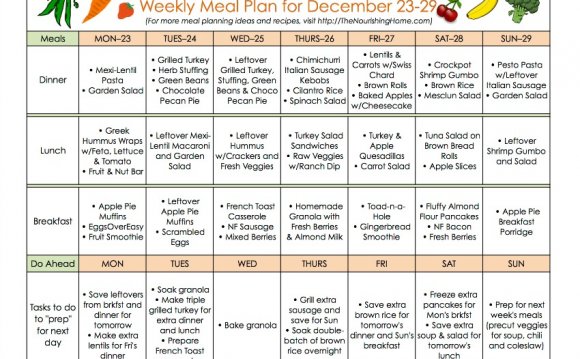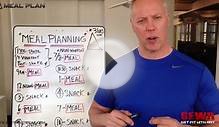
Too many home managers look for answers in the supermarket at 5 p.m. Harried from the day's work and harassed by by hungry children, they rack their brains for an answer to the what's-for-dinner dilemma.
Three meals a day. Seven dinners a week. From supermarket to pantry, refrigerator to table, sink to cupboard, the kitchen routine can get old, old, old.
No wonder we hide our heads like ostriches from the plain and simple fact: into each day, one dinner must fall. What's the answer? A menu plan.
Menu planning doesn't have be complicated! Planning meals ahead requires a small investment of time, but can reap great rewards:
- A menu plan saves money. Reducing trips to the supermarket, a menu plan reduces impulse spending. Using leftovers efficiently cuts food waste, while planned buying in bulk makes it easy to stockpile freezer meals at reduced prices.
- A menu plan saves time. No dash to the neighbors for a missing ingredient, no frantic searches through the freezer for something, anything to thaw for dinner.
- A menu plan improves nutrition. Without the daily dash to the supermarket, there's time to prepare side dishes and salads to complement the main dish, increasing the family's consumption of fruits and vegetables. Knowing what to serve each day-and having the ingredients already on hand-cuts back on the drive-through habit.
Follow these tips to put the power of menu and meal planning to work for you:
Dare to Do It
For too many of us, making a menu plan is something we intend to do . . . when we get around to it. Instead of seeing menu planning as an activity that adds to our quality of life, we dread sitting down to decide next Thursday's dinner. "I'll do that next week, when I'm more organized."
Wrong! Menu planning is the first line of defense in the fight to an organized kitchen, not the cherry on the icing on the cake.
Take the vow. "I, [state your name], hereby promise not to visit the supermarket again until I've made a menu plan!"
Start Small and Simple
Still muttering, "But I don't wanna ..."? Break into menu planning easily by starting small and simple.
Think, "next week." Seven little dinners, one trip to the supermarket. Sure, it's fun to think about indexing your recipe collection, entering the data in a database and crunching menus till the year 2015, but resist the urge.
Slow and steady builds menu planning skills and shows the benefits of the exercise. Elaborate hoo-rah becomes just another failed exercise in home management overkill.
Where to start? The food flyers from your local newspaper, or sales circulars from your markets' Web sites. You'll use the ads to get a feel for the week's sales and bargains. They'll be the basis for the week's selection of dinners.
This week in my hometown, two local chain supermarkets are offering whole fryers for the low, low price of 99 cents a pound. Clearly, this is the week for Ginger Chicken and Fajitas, not a time to dream about Beef Stew and Grilled Pork.
Menu Planning Basics
Okay, it's food ad day. Time to rough out a simple menu plan.
The goal is two-fold: shop efficiently to obtain food required for seven dinner meals, while minimizing expenditure, cooking, shopping and cleaning time. Here's the overview of the process:
- Scan the food ads (newspaper or online) for specials and sales. Rough out a draft menu plan: seven dinner entrees that can be made from weekly specials, side dishes and salads.
- Wander to pantry and refrigerator to check for any of last week's purchases that are languishing beneath wilting lettuce or hardening tortillas. Check for draft recipe ingredients. Review your shopping list and note needed items.
- Ready, set, shop-but shop with an open mind. That 99-cent fryer won't look like such a bargain next to a marked-down mega-pack of boneless chicken breasts at $1.29 a pound. Be ready to substitute if you find a great deal.
- Return from shopping. As you put away groceries, flesh out the menu plan. Match it up with the family's calendar, saving the oven roast for a lazy Sunday afternoon, the quick-fix pizza for soccer night.
- Post the menu plan on the refrigerator door. Refer to it during the coming week as you prepare meals.
That's it! The bare bones of menu planning.
You've made a draft plan, shopped from a list, retained flexibility in the marketplace, firmed up your plan and held yourself accountable.
INTERESTING VIDEO












